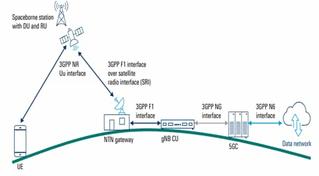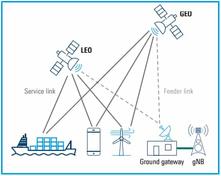Difference Between TN and NTN (Non Terrestrial Network)
Advertisement
Introduction : In the evolving world of communication technology, TN (Terrestrial Networks) and NTN (Non-Terrestrial Networks) play a crucial role in connecting people across the globe. While TN refers to traditional ground based infrastructure such as 4G/5G towers, Wi-Fi, and fiber networks, NTN extends connectivity beyond the Earth’s surface using satellites, High Altitude Platform Stations (HAPS) and UAVs (i.e. drones).
Terrestrial Network (TN)
- Communication network where base stations, towers and infrastructure are on the ground.
- Provides connectivity using terrestrial radio waves (cellular, Wi-Fi etc.).
- Limited coverage due to terrain, tower density and infrastructure cost.
Examples: 4G LTE, 5G, Wi-Fi, Fiber, DSL
Non Terrestrial Network (NTN)
- Communication network that uses spaceborne (satellites) or airborne platforms (HAPS, UAVs, balloons) to provide connectivity.
- Provides wide area coverage
- Used where terrestrial infrastructure is unavailable (e.g. remote, ocean, disaster zones).
Examples: Satellite Internet (Starlink, Oneweb ), HAPS based network, Satellite phone network (e.g. Iridium, Thuraya)
Key differences
| Feature | Terrestrial Network (TN) | Non Terrestrial Network (NTN) |
|---|---|---|
| Location | Ground based towers and fiber networks | Spaceborne (Satellites) & airborne (UAV, HAPS) |
| Coverage area | Local to regional | Very wide, regional to global |
| Latency | Lower | Higher |
| Mobility Support | Optimized for urban/suburban mobility | Works in remote areas, oceans, deserts, disaster recovery |
| Reliability | Can be disrupted by terrain, natural disasters | Less terrain dependent, but affected by weather /space conditions |
Conclusion: To summarize, the key difference between TN and NTN lies in their infrastructure and coverage. Terrestrial Networks (TN) rely on ground-based towers and are widely used for urban and suburban connectivity, offering low latency and high reliability. On the other hand, Non-Terrestrial Networks (NTN) use satellites and airborne platforms to extend coverage to remote, rural and oceanic regions, ensuring seamless communication where terrestrial systems fall short. As 5G and beyond technologies continue to evolve, the integration of TN and NTN will play a vital role in building a truly global and resilient communication ecosystem.
Advertisement
 RF
RF
